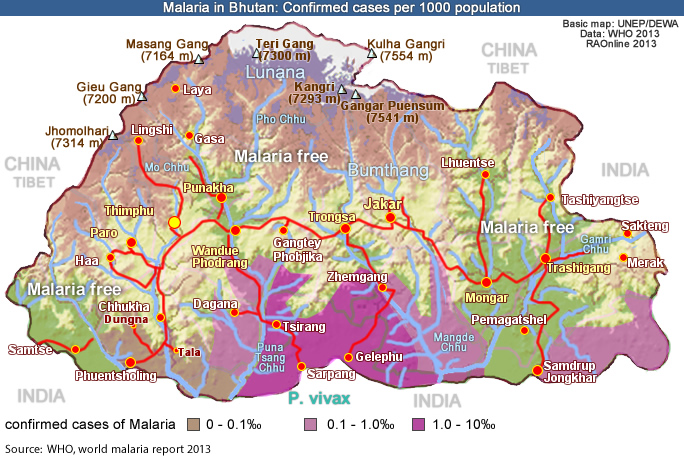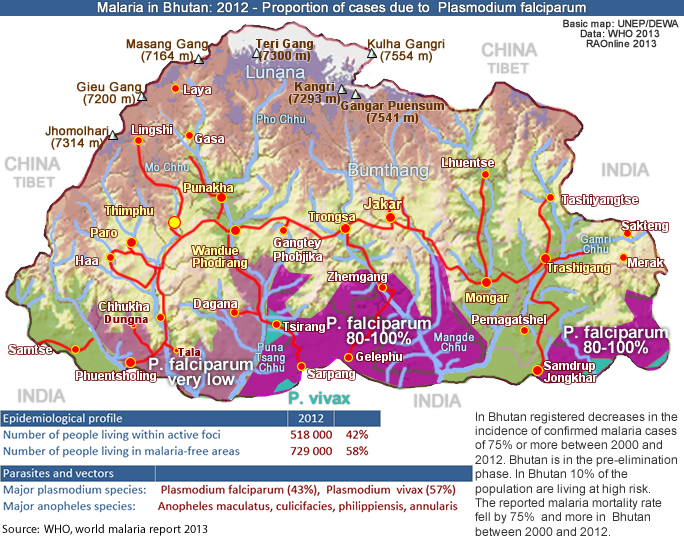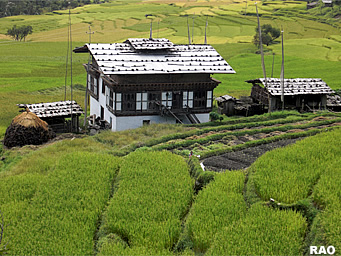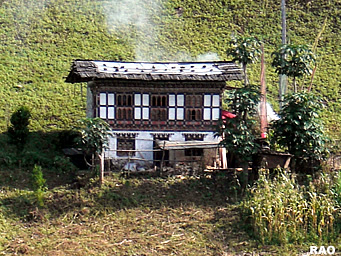 |
Health |
|
|
 |
| Bhutan targets to eliminate the disease after four years |
 |
Malaria incidence drops to 194 from 40,000
Health Given the reduction in malaria incidence in the last 17 years, Bhutan is targeting to eliminate malaria cases by 2016.
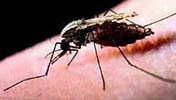 |
|
Bhutan's Vector-borne Disease Control Programme (VDCP) report, which was published in the Malaria Journal on January 9, stated that malaria cases declined from 40,000 in 1994 to 194 in 2011, and deaths from 42 to one during the same period.
|
|
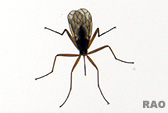 |
|
The report's author Dr Thinley Yangzom said Bhutan has reached a low level of malaria incidence, which means the country was at the point of achieving zero transmission of indigenous cases. Indigenous or local malaria refers to transmission of disease from one person to another in a same locality.
|
|
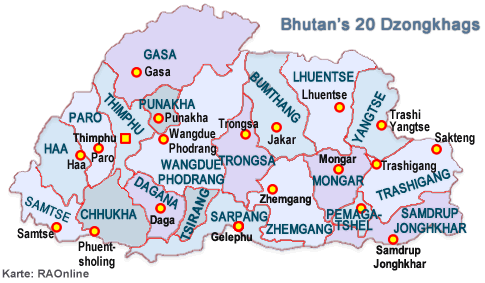 |
Majority of indigenous cases in Bhutan were attributed to Plasmodium vivax that constituted 59.9 percent of the total infection recorded over the years. In 2010 alone, there were 436 microscopy confirmed indigenous cases of which 261 were caused by Plasmodium vivax, 140 by Plasmodium falciparum, and 35 cases were of mixed infections.
|
|
Dr Thinley Yangzom said adult males were most at-risk as the group being economically productive, move out more than women and children.
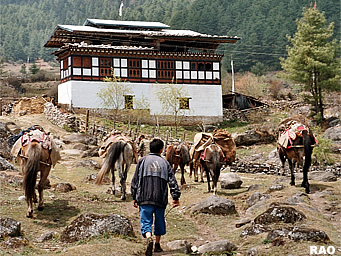 |
She also said Plasmodium is a protozoa, a parasite that causes different types of malaria depending on the species. She explained that among the five species of Plasmodium, P. falciparum is the most serious because it could kill if not treated within 48 hours.
Health officials contributed the decline of malaria incidences to access to malaria diagnosis treatment throughout the country; introduction of artemisinin-based combination therapy for Plasmodium falciparum; increasing coverage of high risk areas with indoor residual spraying; insecticide-treated bed nets and providing long-lasting insecticidal nets.
|
|
Among the 20 dzongkhags, malaria is endemic only in the seven border districts as the transmission is perennial which means the climate is favourable for malaria transmission throughout the year.
These districts share their borders with Indian states of Assam and West Bengal and have a population of 284,512, which is 42 percent of the population.
Bhutan was successful in containing malaria despite the challenges of a difficult terrain with landslides blocking roads during monsoon, poor road access for 21 percent of households and an influx of migrant labour from India, where malaria is endemic, the report stated.
Malaria risk areas are mainly forest and forest-fringe human settlements, in particular those with irrigation or development projects, such as hydropower project sites.
According to the report, 24 percent of the population lives in areas considered free of malaria, located in four districts in the north-east and central parts of the country. These areas are not receptive to malaria transmission because of their high elevation and cooler temperatures.
Sarpang dzongkhag, which borders Assam recorded most of the imported cases every year from 2000 to 2010 and the highest number of indigenous cases in seven out of 10 years (2000–03, 2005, 2008–10).
Over the last decade, the dzongkhag has contributed an average of 88 percent of imported cases and an average of 47 percent of indigenous cases in Bhutan.
| contributed
by Tenzin Namgyel, KUENSEL, Bhutan's National Newspaper , January 2012 |
 |
|


